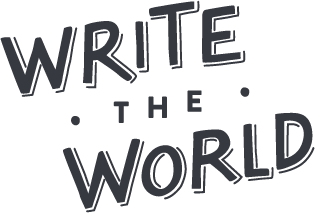Our Flash Fiction Competition saw young writers create pocket-sized stories, condensing universal...
"I wanted to structure my article in a way so that the reader felt like they were stepping into a scene from a novel," says Annabelle Peng, winner of our Science Writing Competition. "Forming analogies and using literary devices not only helps the reader understand and feel engaged but also adds color to one’s work!"
Read on to learn more about the competition winners and explore the importance of creativity in science writing.
Annabelle Peng, Age 15 - Winner

Science writing is a more academic style, but it still requires a lot of creative flair to engage an audience! How did you achieve this balance in your winning piece?
I’ve always liked to read about science fiction and was largely inspired by Cixin Liu's Three-Body Problem to write about our planet’s physics. Because of this, I wanted to structure my article in a way so that the reader felt like they were stepping into a scene from a novel, using their imagination to enter a world with altered gravity. Like writing fiction, I incorporated certain figurative devices to create a lively tone and paint imagery through light-hearted, but reasonable connections. I believe that forming analogies and using literary devices not only helps the reader understand and feel engaged but also adds color to one’s work! However, I also ensured that these devices didn’t distract from my main points when I checked over my work. It’s important to keep in mind the purpose behind what you’re writing. I hope that my article can help science-fiction writers who are curious about the implications of a setting on a different planet.
Guest Judge Shannon Palus commended your use of the second person, which "really works here to carry the reader through the scenario." Why did you choose to use this style of address? Do you think it changes your relationship with the reader?
I do think that it changes my relationship with the reader! The use of the second person helps to involve the reader in the piece as an active participant. I was encouraged to do so since in order to ensure that my explainer followed a steady course of logic, I imagined myself tutoring one of my friends. The use of the second-person also worked incredibly well since my article involves a thought experiment, and guiding the reader through that was one of my large focuses.
Sophie Zhang, Age 14 - Runner-Up

In your winning piece, you wrote about the link between the brain and microbes in the gut. How did you go about researching this topic?
I first learned of the link between gut microbes and the brain from TED talks, so in the very beginning, I was relying very heavily on videos for my research. As I gained a better understanding of the topic and the overall vocabulary, I shifted to articles from reputable sources, and eventually to actual studies. Before I even started writing my essay, I took notes from all these sources which later also helped me better plan a layout for where I wanted to explain each piece of information. Throughout this whole process, one challenge I faced was definitely just finding trustworthy articles. As I've found out, research in this area is still constantly developing and sometimes data gets outdated.
Are you working on any other writing projects at the moment?
Yes! As of now, I am actually working on a personal essay. I really like learning and writing about interesting topics but at the same time I also enjoy sharing and reflecting on my own experiences.
Lasya Hota, Age 15 - Best Peer Review

What first drew you to write a review of Janine's piece?
What specifically drew me to Janine’s piece was the clever, metaphor-infused title, “STEMming from Stem Cells: The Unemployed Workers of the Human Body.” Particularly, I was intrigued because stem cell research is a field where science and ethics intersect, and I think exploring this kind of complex subject is both relevant and impactful. Janine did a great job of explaining the basics while diving into some of the challenges in the field, so I was excited to offer feedback on a topic that can be both scientifically detailed and profound. I was also curious to see how she would tackle such a nuanced subject, and I wanted to help amplify those strengths in her work.
If you could give one top tip for writing feedback of another person's work, what would it be?
If I had to give one top tip, it would be to balance encouragement with constructive criticism. Instead of just focusing on what works and what could be improved, I think it's also important to dig deeper into why each choice was made. For example, I like to question the purpose of each literary device or piece of phrasing, asking, “Does this metaphor connect with the core message?” or “How does this structure affect the flow?” Reversely, I would think about what elements could be added or shifted to resonate even more powerfully with the audience. This approach allows feedback to be more of an engaging reflection, helping the writer see both the strengths and possibilities within their own work, which ultimately makes the piece even more impactful.





